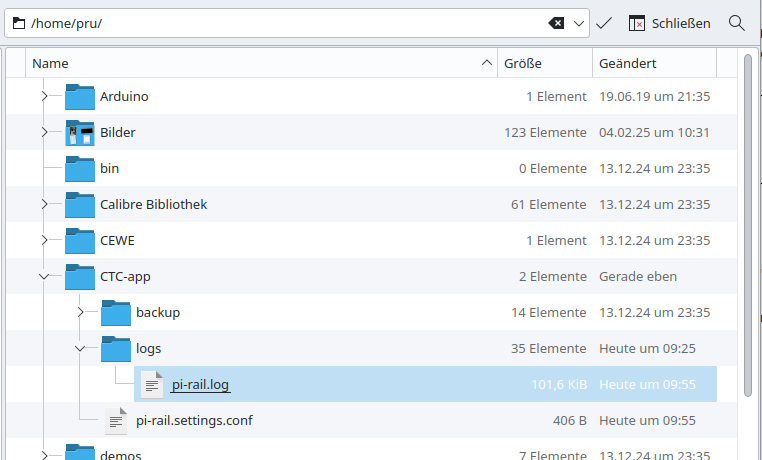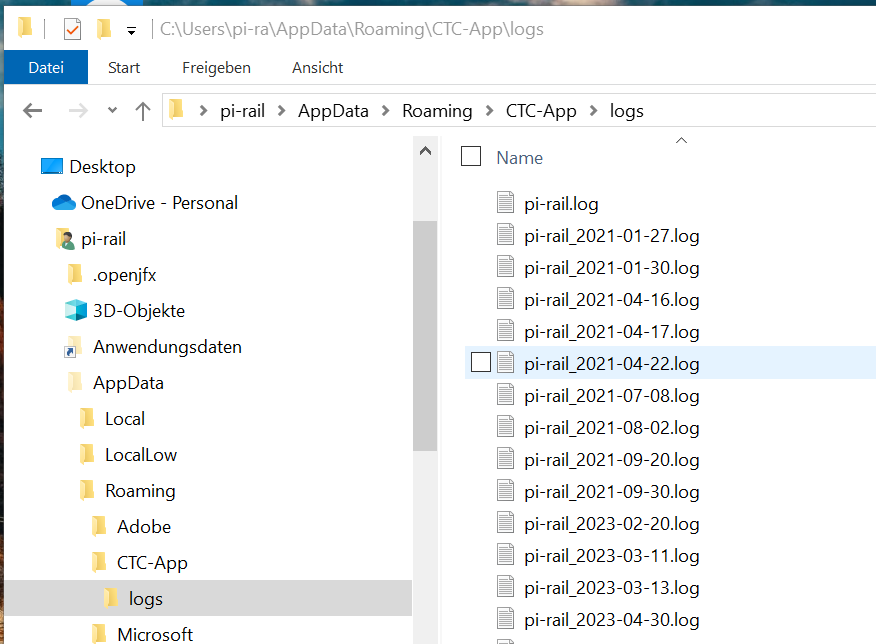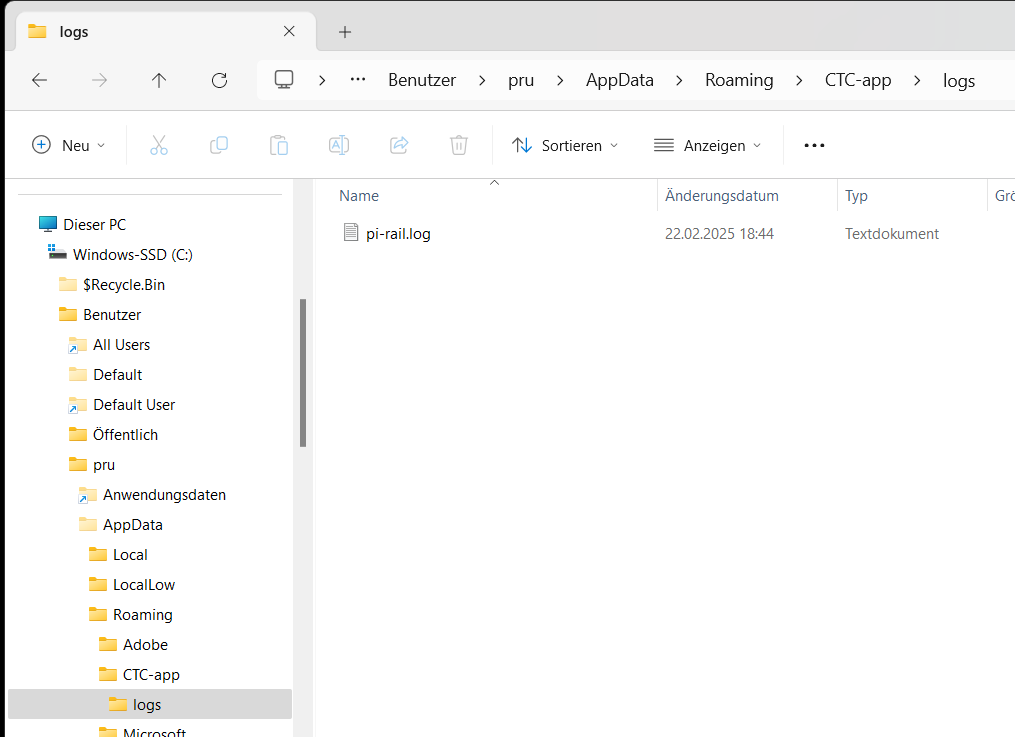For more information on this topic, see the Troubleshooting FAQ section.
The status indicator (LED or headlight) is described in Chapter 7 - Module Status Indicators.
Log Output from CTC Modules
As of CTC App version 4.19 and the corresponding firmware, the log messages from the CTC modules are transmitted to the CTC App and displayed in the configuration dialog—see “Log Output” in Chapter 4 “Configuring Modules”.
This is where you will also find notes on configuration errors, for example. Additionally, these outputs can help us narrow down the cause of an issue when you submit a support request.
To view the messages from the startup of a CTC module, follow these steps:
- Open the CTC App and power on the relevant CTC module.
- Open the configuration dialog for the CTC module.
- Turn off the power to the relevant CTC module for a few seconds, then turn it back on.
- As soon as the CTC module reappears in the CTC App (Wi-Fi symbol green), the startup messages from the CTC module will appear in the log output.
Configuration Files of the CTC Modules
The easiest way to download and back up the configuration files of all CTC modules is via the “Settings / Config Backup” menu item in the CTC app (desktop). Here, you select a folder on your hard drive as the backup folder. Afterward, a subfolder named after each accessible CTC module will be created in this backup folder, containing all the configuration files for that module.
When submitting support requests, it is often helpful to include the configuration files of the affected CTC modules.
CTC App Log Files
For support requests or error reports, the CTC app’s log file is often very helpful to us. The desktop app creates a folder named “CTC-App” in your user directory (personal folder), with a subfolder called “logs” inside it. There, you will find the log file under the name “pi-rail.log”.
Below, we’ve compiled instructions on how to locate your user directory. Sometimes, I wonder if certain operating system manufacturers should stick to making novelty items instead of software.
User Directory on Linux
On Linux, the user directory (user home) is /home/USER, where USER represents your username.
All common file explorers for Linux open in the user directory by default.
There, you will find the folder “CTC-app” containing the “logs” subfolder:

User Directory on macOS
Apple plays a nice little game of hide-and-seek with you. Here, the user directory is assigned as “/home/USER/Library/Application Support”. To access this folder in Finder, click the “Go” menu and then press the ALT (Option) key. Suddenly, a new menu item “Library” appears—click it. After that, Finder behaves as expected: Click the “Application Support” folder, then “CTC-App”, and finally “logs”.
User Directory on Windows 10
In Windows, the user directory is (currently) prominently placed in the left pane of File Explorer. Directly below Desktop, one of the first entries is a folder with your own name (in this example, “pi-rail”). After that, things get a bit unclear.
Here, you’ll find the “AppData” folder, and beneath it, “Roaming”. Once there, open the “CTC-App” folder, and then the “logs” folder:

The log file without a date in its name is from today. For all others, the date is encoded in the filename (Year-Month-Day).
User Directory on Windows 11
On Windows 11, the logs are located in the same place as on Windows 10, but the Windows Explorer interface looks slightly different again. Start with the “C:” drive and open the folder with your name under “Users” (here, “pru”). Below that, you will again find “AppData,” followed by “Roaming,” and finally “CTC-app” with the “logs” folder:




